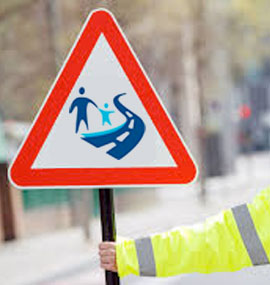Cyclists: Look Out – Cycle Safely
Here are some useful tips and advice to feel more confident when cycling, improve your road safety and help drivers to see you more clearly.
1. Lights and reflectors
By law, when it is dark or there is poor visibility you must have lights on your bike. At least one front lamp is required, showing a white light and one rear lamp, showing a red light. Make sure you carry spare lights or batteries just in case. Reflectors should be fixed to the rear of your bike and to the front and rear of each pedal. You can also install reflectors on the seatstays or fork blades, on rims between spokes, and even helmets and rucksacks.
For more information on lighting regulations visit the Cycling UK website
2. Reflective / high visibility clothing or accessories
Remember; fluorescent by day and reflective by night. This can be a jacket, waistcoat, rucksack cover or ankle bands etc. It’s surprising how effective just a few patches of reflective or high visibility can be so you don’t need a full reflective or high visibility outfit – but just ensure patches of your kit are.
3. Make eye contact and look around you
Always try to make eye contact with other road users to make sure you have been seen. Check what is happening around you at all times. Look well ahead for obstructions in the road, such as drains, potholes and parked vehicles, so you can anticipate your movements.
4. Junctions
When approaching a junction on the left, watch out for vehicles turning in front of you. Just before you turn, check for undertaking vehicles. Don’t ride on the inside of vehicles signalling or slowing down to turn left.
Pay attention to long vehicles which need a lot of room to manoeuvre at corners. Be aware that the driver may not see you. Don’t be tempted to ride in the space between the vehicle and the kerb.
If you’re turning right, check the traffic to ensure it is safe, then signal and move to the centre of the road. Wait until there is a safe gap in the oncoming traffic and give a final look before completing the turn.
There’s more information in The Highway Code.
5. Roundabouts
Roundabouts can be hazardous and should be approached with care. Keep to the left-hand lane and:
- be aware that drivers may not easily see you. Taking the primary position (middle of the traffic lane) may increase your visibility
- take extra care when cycling across exits. You may need to signal right to show you are not leaving the roundabout
- watch out for vehicles crossing your path to leave or join the roundabout.
Give plenty of room to long vehicles on the roundabout as they need more space to manoeuvre. Don’t ride in the space they need to get around the roundabout. It may be safer to wait until they have cleared the roundabout.
6. Keep clear of the kerb
Ride no less than 0.5 metres away from the kerb. It’s safer to ride in the middle of your traffic lane (the primary position) if there’s not enough room for a car to overtake you.
7. Be visible and make your intentions clear
Your visibility to other road users can be improved by changing your road position. Know when primary position (taking the traffic lane) and secondary position (no less than 0.5 metres from the kerb) are most appropriate.
Make other road users sure of your intentions to manoeuvre by giving clear signals, with the arm extended and palm facing forward.
8. Avoid blind spots
Larger vehicles have blind spots in front of the cab, on both sides and behind the vehicle. Be aware of these and don’t ride or stop anywhere where the driver may not be able to see you.
9. Plan your journey
Your local council can help you plan your journey by providing maps showing dedicated paths and routes. Your council can also provide additional information on using cycle paths.
Staffordshire cycle map and journey planners
10. Training
Bikeability National Standard cycle training provides riders of all ages with the right level of training for their needs. Training is free of charge for pupils and students across the county and city within schools. Adult and family Bikeability training is delivered on request with charges dependent on government funding, for 2021 there is a limited amount of free training available. To find out more on the national standard and useful riding tips visit the Bikeability website and for training requests email: into@staffordshire.gov.uk.
Sign up for Road Safety tips
Brushing up on your road safety knowledge can help keep you and other road users safe. Get tips delivered straight to your inbox!
Your data will never be shared and you can opt-out of these emails at any time. For more information please see our privacy statement.
